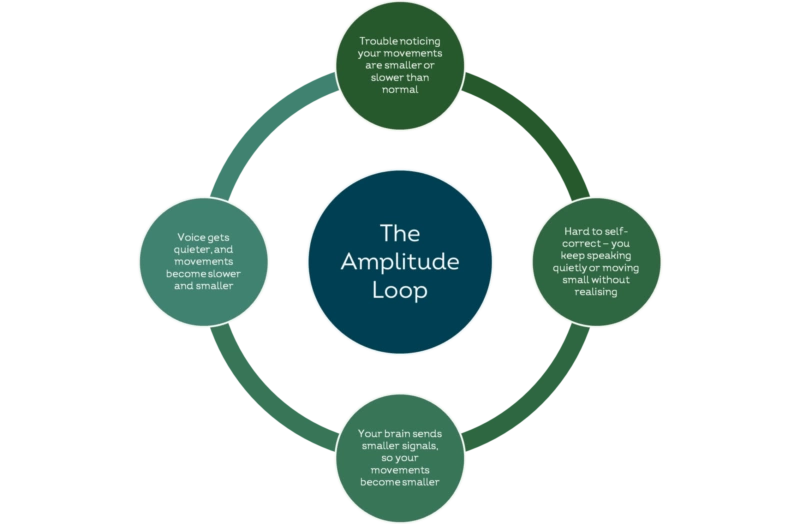Amplitude is crucial in Parkinson’s because it directly affects how well someone can move. Reduced movement amplitude - essentially smaller, more constrained movements is a hallmark of bradykinesia (slowness of movement) and significantly impacts daily life.
When your movements become smaller and more constrained, everyday tasks like getting in and out of bed or the car, can feel much harder and less efficient. The tricky part is that people with Parkinson’s often don’t notice this gradual shrinkage in movement. As the brain sends weaker signals, muscle output diminishes over time, which can lead to increased weakness and a further reduction in movement amplitude.
Why you might not notice shrinking movements: Parkinson’s can impair sensory awareness, so even when you're asked to “move bigger,” it may feel exaggerated, even though it’s small in objective terms. - we call this a sensory deficit
Muscle weakening loop: Reduced physical activity contributes to loss of muscle force, reinforcing the cycle of smaller, slower, and weaker movements over time.

What can you do today?
Move BIG! Increasing your amplitude and putting more power behind your movements is an effective strategy in improving motor patterns and reducing symptoms of bradykinesia and rigidity. When you consciously swing your arms when walking and move BIG, step length tends to increase with improved gait cycle and efficiency of movement.
Research shows that when amplitude (the extent of movement) is very low, patients score worse on clinical tests like the UPDRS-III and disability scales. In fact, amplitude deficits correlate more strongly with overall disability than slowness alone.
Amplitude training e.g. exaggerated arm swing, or big steps is a proven physiotherapy clinical rehabilitation tool designed to recalibrate movement amplitude. Practicing large, deliberate motions helps counteract reduced amplitude movement and helps improve function and quality of life over time.
Helpful resource
Disclaimer
This resource is provided for general information only. It is not a substitute for professional medical advice, diagnosis, or treatment. Always seek the guidance of your GP, physiotherapist, or another qualified health professional before making changes. cann Charitable Trust accepts no responsibility for any outcomes resulting from use of this material.








